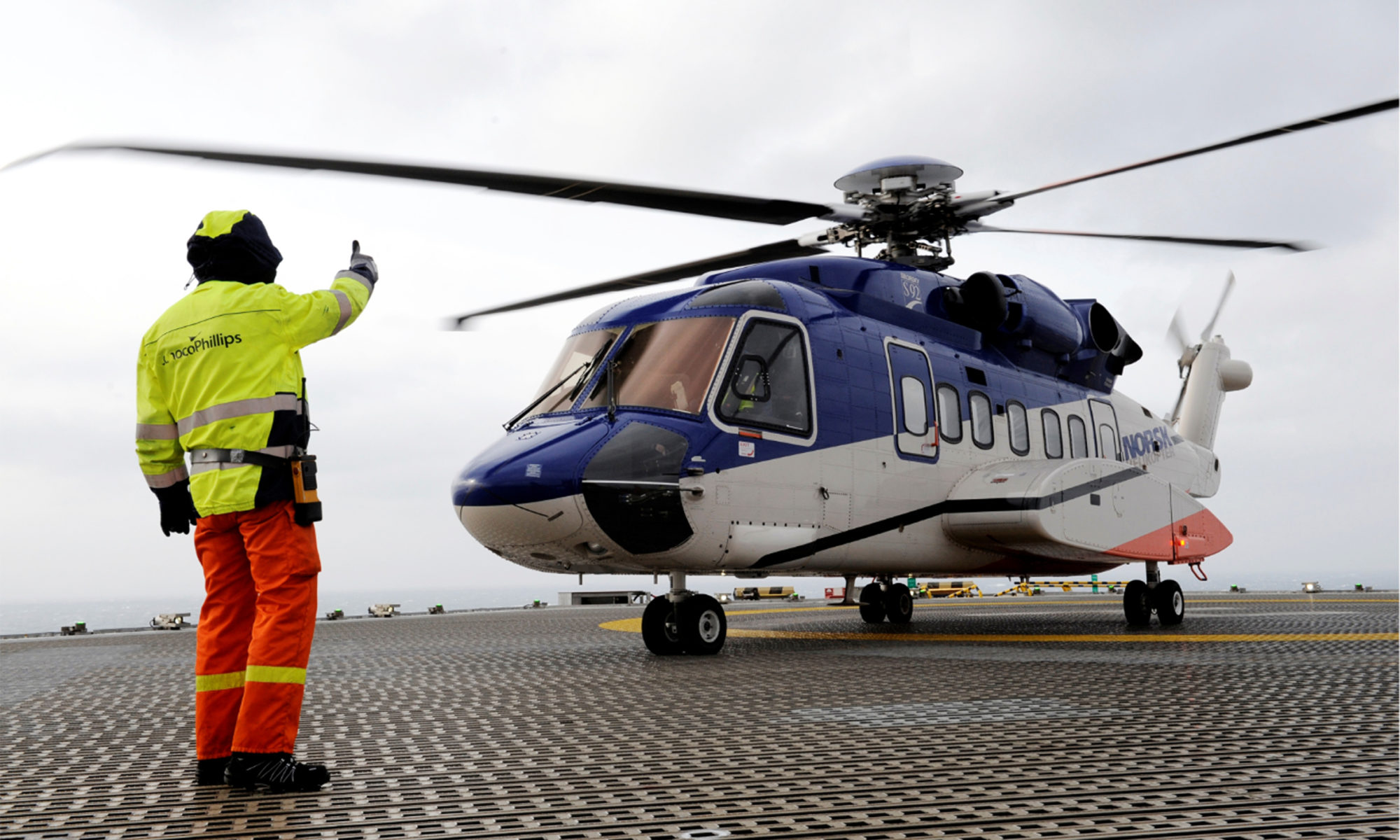Controlling the airspace

Ensuring that transport of personnel out to and back from their workplace takes place in the safest possible way is an important objective for companies and government.
Nevertheless, a number of incidents, near-misses and accidents have occurred in connection with these flights. Everyone concerned has therefore always been conscious of the need for continuous safety improvements. That includes the aviation authorities, the Norwegian Air Accident Investigation Board, other government agencies, the oil companies and the helicopter operators.
To reduce the risk of undesirable incidents, a 2002 official report on helicopter safety recommended introducing a controlled airspace over Norwegian sea areas.[REMOVE]Fotnote: Norwegian Official Reports (NOU) 2002: 17, Helikoptersikkerheten på norsk kontinentalsokkel. Delutredning nr. 2, Oslo, 2002, Ministry of Transport: 59. Downloaded from https://www.regjeringen.no/contentassets/7c70392d61b84d7e813e06f0ac70fde2/no/pdfa/nou200220020017000dddpdfa.pdf
That means air traffic controllers rather than the pilots themselves become responsible for such matters as ensuring that aircraft and helicopters stay far enough apart.[REMOVE]Fotnote: enerWEW, “Avinor øker sikkerheten i luftrommet over Ekofisk”, 20 November 2015.
This distance has become too narrow on a number of occasions. No less than five near-misses in three days were reported between military and civilian planes and helicopters in 2002. That was during a Nato exercise in the Norwegian Sea. Three years later, two fighter jets from Ørlandet were on a collision course with a helicopter flying to Troll in the North Sea.[REMOVE]Fotnote: Meland, Trude, “Almost a crash”. Draugen industrial heritage, 25 May 2018. Downloaded from https://draugen.industriminne.no/2018/05/25/nesten-krasj/.
Despite the good intentions of the aviation authorities, it took time before measures to secure the airspace were put into place. A 2005 plan called extended radar coverage from 1 500 to 8 000 feet over the sea areas, not only between western Norway and Ekofisk but also out to Statfjord and the Halten Bank fields. This NOK 101 million project, due to be completed in the first half of 2008, required radar facilities on the Heidrun platform in the Norwegian Sea, on Ekofisk and on land in Rogaland county.
These new installations would be able to communicate with a black box in planes and helicopters. Turning off the box meant that the aircraft concerned would disappear from the radar.
Airport operator Avinor nevertheless decided in 2009 to shelve the radar monitoring plan because a safer, more accurate and cheaper solution had emerged.[REMOVE]Fotnote: Berge, Christian, “Ny kontroll offshore”, Flygelederen, no 3, 2009.
Know as the automatic dependent surveillance—broadcast (ADS–B) system, this solution basically involves the helicopter transmitting automatic signals. Reporting position, identity and other parameters, these are picked up by a network of ground stations and the information is routed on to Avinor’s control centres.[REMOVE]Fotnote: Dalløkken, Per Erlien, “Norsk sokkel blir først i Europa med nytt overvåkingssystem for helikoptre”, Teknisk Ukeblad, 23 October 2014.
The ADS-B solution was implemented for the Greater Ekofisk Area in 2014, and Avinor Air Navigation Services finally established a controlled airspace there in 2015. All helicopters used to and from the installations then had to be fitted with ADS-B transponders.
Safeguarding helicopter traffic on the NCS was further extended in 2016 when the Balder area was included, following by Statfjord later in the year. Plans call for both Heidrun/Norne and Goliat/Snøhvit to be covered by 2020.
All radars monitoring Norwegian airspace are due to be phased out in 2019-35 and replaced with modern technology. Air traffic controllers will know the position of every plane and helicopter at all times across the wide sea areas controlled by Norway, in the same way done over land.[REMOVE]Fotnote: Avinor Air Navigation Services. Annual report 2016
Ekofisk 2/4 L inauguratedEldfisk II operational with 2/7 S